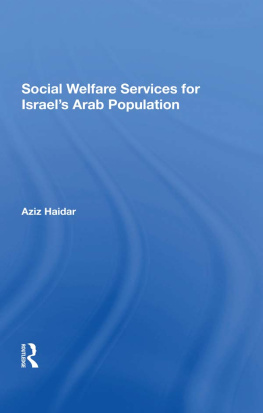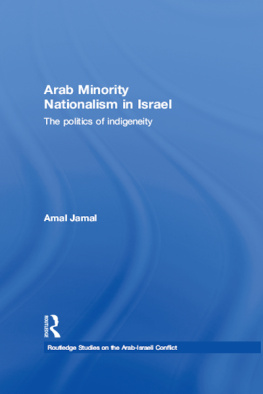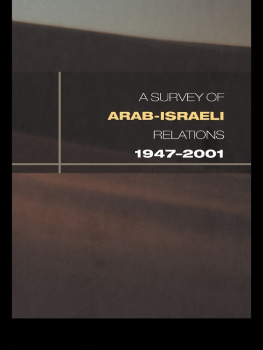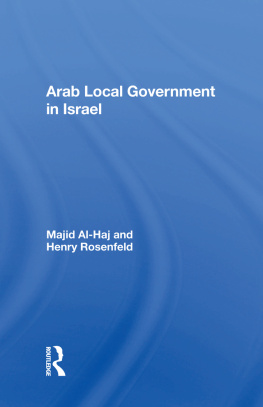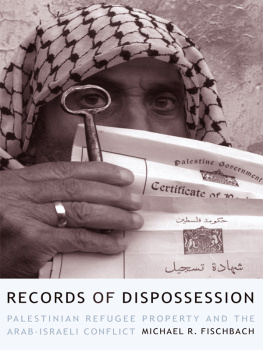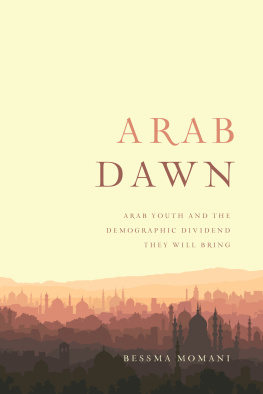Social Welfare Services for Israels Arab Population
Published in cooperation with the International Center for Peace in the Middle East, Tel Aviv
The International Center for Peace in the Middle East (ICPME) gratefully acknowledges the Ford Foundation for making this project possible. The views expressed in the publications of the ICPME are those of the authors and do not necessarily reflect the views of the trustees, officers, or staff of the ICPME.
The Status and Condition of the Arabs in Israel
A project under the direction of Professor Henry Rosenfeld
The 750,000 Israeli Arabs are a national minority making up 17 percent of the population of Israel. In 1987 the International Center for Peace in the Middle East, together with Professor Henry Rosenfeld, director of the project, initiated a comprehensive research project on the status and condition of the Arabs in Israel. The focus of the research is on the Arabs legal status, health and social services, and local authority in Arab communities. The books prepared by the project members report the empirical findings from the project and offer a penetrating analysis of the degree of social, economic, and political integration between Arabs and Jews, the extent of discrimination, and the degree to which rights and opportunities are shared by all.
Social Welfare Services for Israels Arab Population
Aziz Haidar
In the mid-1980s, over 40 percent of Arab households fell below the poverty line. In this book, Dr. Haidar, a Palestinian living in Israel, presents the results of extensive fieldwork in Arab and Jewish localities on the social conditions and welfare service needs of Arab children, youth, and elderly in Israel.
Aziz Haidar is assistant professor of sociology at Bir Zeit University, the West Bank.
First published 1991 by Westview Press
Published 2019 by Routledge
52 Vanderbilt Avenue, New York, NY 10017
2 Park Square, Milton Park, Abingdon, Oxon OX14 4RN
Routledge is an imprint of the Taylor & Francis Group, an informa business
Copyright 1991 by the International Center for Pmce in the Middle East
All rights reserved. No part of this book may be reprinted or reproduced or utilised in any form or by any electronic, mechanical, or other means, now known or hereafter invented, including photocopying and recording, or in any information storage or retrieval system, without permission in writing from the publishers.
Notice:
Product or corporate names may be trademarks or registered trademarks, and are used only for identification and explanation without intent to infringe.
Library of Congress Cataloging-in-Publication Data
Haidar, Aziz.
Social welfare services for Israels Arab population / by A.
Haidar
p.cm. (Westview special studies on the Middle East)
1. Social serviceIsrael.2. Palestinian ArabsIsraelSocial
conditions.I. Title.II. Series.
HV378.5.H34 1991
362.849274056944dc20
8925078
CIP
ISBN 13: 978-0-367-28771-9 (hbk)
For their assistance with this research, the author wishes to thank Dr. Amin Haj-Yehia, Mr. Muhammad Masalha, Milada Dakwar, and Rajda Zouabi, and all the workers from the social welfare services system who volunteered their help and who prefer to remain anonymous.
Anyone attempting to trace the development of social welfare services for the Arab population of Israel encounters great difficulty mainly because of a dearth of information. The governmental and public agencies responsible for conducting and interpreting surveys and disseminating information about the development of conditions of need provide an abundance of material on the Jewish sector; but the overwhelming majority ignore the very existence of the Arab population.
Heretofore no research has been conducted to investigate the mode of operation of the social welfare agencies serving the Arab population. A great deal of research has been done in this field in Israel, but even when the research was conducted in mixed (Arab and Jewish) cities or concerned agencies supposedly serving both populations, the researchers or investigatory commissions made no mention whatever of the state of services in the Arab sector. And the studies addressing the condition of specific population groups within the Arab sector, or services provided to a group considered distressed in a particular way, can almost be counted on the fingers of one hand.
Other than the commission that investigated housing needs in the Arab sector (Abukishk and Geraisy, 1977), all research studies of, or commissions of inquiry into, the state of social services in the Arab sector have been undertaken during the 1980s. In other words, material documenting the condition of the Arab population in general, and especially that of distressed sub-groups, is nonexistent.
This situation transforms our work into a pioneering effort that undertakes to provide an overview of the social distress of the Arab population and of the framework of social welfare services. Even more difficult, of course, is to trace the historical development of distress and of the system of welfare services. Hence the quantity and nature of the existing literature dictated to a large extent the direction and character of our work and the presentation of the findings in the respective sections.
, consideration is given to the welfare system serving the Arab population under the British mandate. This section is the shortest due to the dearth of obtainable information. The remaining sections of the report consider social needs and the welfare system after the state came into being. Also with respect to this period, as noted, we again encounter difficulties arising from lack of information, especially vis-a-vis the first twenty years. The available information relating to that period does not cover all the areas we had intended to investigate, and it appears even more scanty when compared to the information we were able to gather on present conditions. For this reason, we decided to differentiate between the two time periods in an arbitrary fashion.
The main part of the book thus begins with a section devoted to a survey of the development of social services during the 1950s and 1960s. The remaining sections (212) consider the existing conditions of distress and social services in the Arab population. We devoted three sections (46) to a consideration of needs in three areas (economic needs, housing, and health and disability). In three additional ), we consider distress among three age groups (children, youth, elderly). The demarcation among the subjects under scrutiny in these six chapters is to a large extent arbitrary. Each of the areas of need we will consider is related to each of the others and they all affect each of the age groups examined. On the other hand, however, it is useful to distinguish between types of need, because not only may there be diverse factors leading to disadvantage, but also the form in which distress expresses itself may vary; moreover, different kinds of needs require different treatment and the mobilizing of differing resources.
Even more arbitrary for us, and more difficult, was differentiating between social welfare services and other services such as education, health, and infrastructure services. The reader will note that in the body of the work, it was untenable not to address such social services and infrastructure services in order to examine the respective forms of distress we had chosen to consider, and in order to provide a complete and comprehensive picture of the ways in which the respective age groups are distressed. In any case, areas not within the framework of this report are touched on only briefly, sometimes merely superficially, and that only to round out the picture that would appear inadequate without such references in passing.

